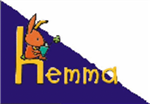Annuaire d' éditeur / La Nuée Bleue
La Nuée Bleue: contact et modalités de dépôt d'un manuscrit
Maison d'édition à compte d'éditeur crée en 1920 500 livres au catalogue
Créée en 1920 à Strasbourg au sein du quotidien « Les Dernières Nouvelles d’Alsace », La Nuée Bleue a un fort ancrage régional en Alsace et dans le Grand Est.
Plus de 500 titres et autant d’auteurs composent un catalogue extrêmement diversifié : histoire, patrimoine, art de vivre, romans, mais aussi essais interrogeant les enjeux contemporains.
La Nuée Bleue se positionne comme un éditeur rigoureux tourné vers le grand public. Elle fait partie depuis 2014 des Éditions du Quotidien.
Riche de son savoir-faire d’éditeur en région, La Nuée Bleue a lancé en 2010 « La grâce d’une cathédrale », une collection nationale de référence et de prestige dédiée aux cathédrales de France.
Contact
Site Web
https://www.nueebleue.com/Adresse
3 rue Saint-Pierre-le-Jeune, 67000 Strasbourg FranceMaisons d'éditions similaires :
Pour écrire un commentaire, connectez-vous.

